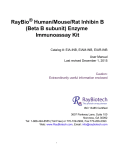Transcript
Perfusion fixation troubleshooting tips Solution coming out from animal’s nostrils or mouth The needle is inserted incorrectly. Try to get the needle up the left atrium so that the solution does not flow into the lungs. Be careful not to insert the needle too far up as there is a risk of puncturing an internal wall. Getting the right position may require some practice, so try moving the needle around a bit until the solution stops flowing from the animal’s nostrils or mouth. Fixation taking too long The fixative solution is not circulating properly. Make sure that you have properly clamped the needle at the point of entry and that there is no leakage/puncture to the heart. This can be easily done by dabbing dry the area around the heart to see if the fixative is leaking out. Also, try repositioning the needle insert. Punctured heart If the heart has been accidentally punctured, then the perfusion fixation may not be complete and the sample organ/tissue may not be properly fixed. In such instance, try one or more of the following: 1. Try to clamp the puncture wound close. Continue with the perfusion fixation but make sure to fix the organ in the same fixation for more than 2 hours after excising it. In this case, it would be best to do immersion-fixation at 4oC, over night. 2. If your sample organ is a testis, after excising it, try injecting some of the fixative into the apical regions, right under the tunica albuginea layer, so that the seminiferous tubules inside will be fixed. The testis will bloat up a bit and feel hard if it is has been injected correctly. 3. If you are able to locate a vein in your sample organ, you can manually try to inject (using a syringe) the fixative solution into the vein. If the above methods are not successful, it would be best to start with a new animal subject. Please bear in mind that perfusion fixation can require some practice to avoid mistakes. Discover more at abcam.com/technical








